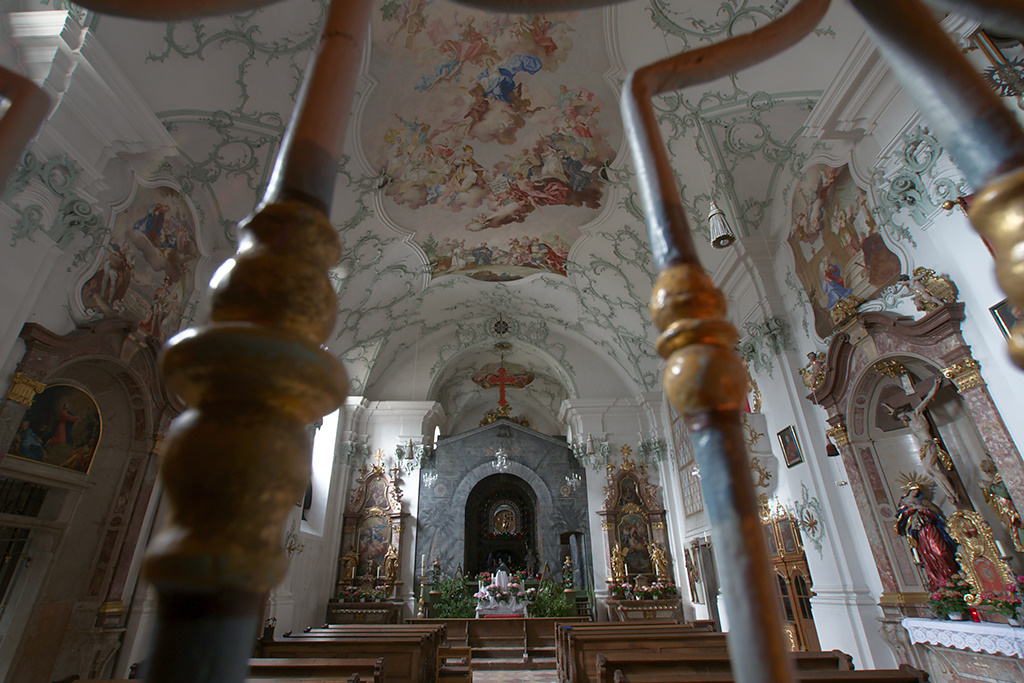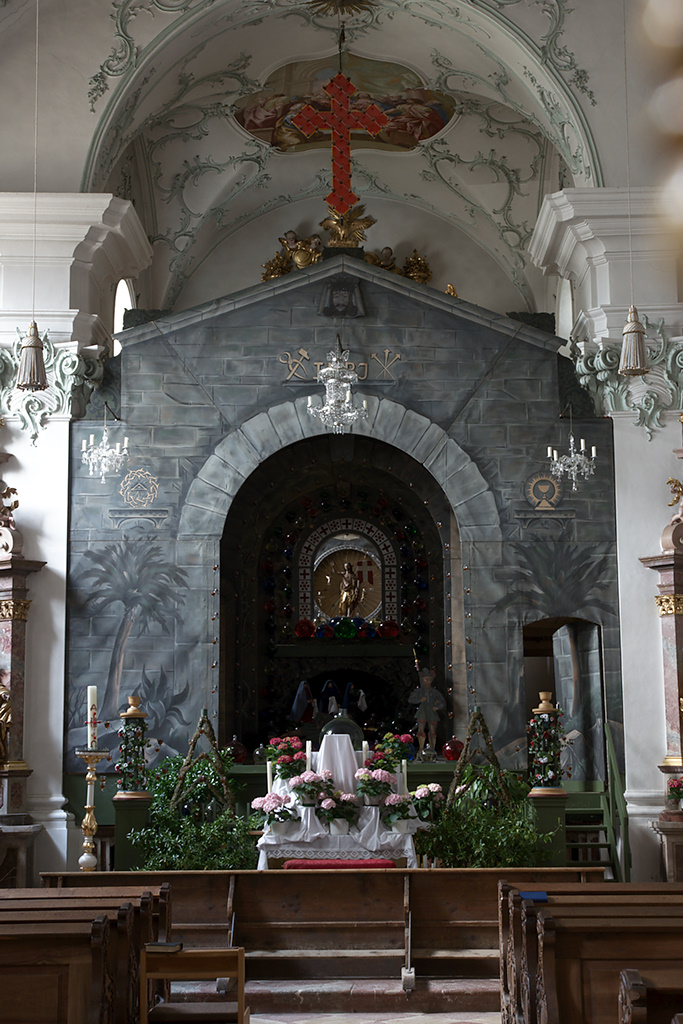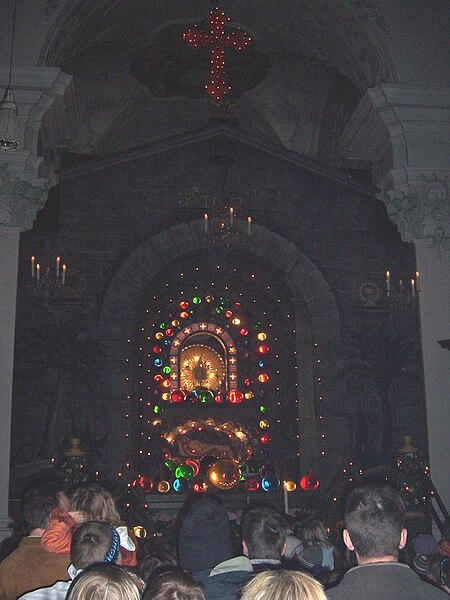



Maybe I should make a story wallowing in self-pity, coming two days late for the Holy Grave of the Höglwörth abbey church. The specialty of this Holy Grave is, that it is only shown every third year, and is only shown on Good Friday and Holy Saturday in it’s full beauty . But then, I have to admit, I am not so fond of these overly vivid decorations, reminding me more of a contemporary indian bus driver cockpit then a typical christian church.
Enough digressing. The Holy Grave takes up the whole space of the Presbyterium of this rococo church, showing the grave of Holy Christ with the women mourning, while over this scenery in the deepest layer, the resurrected Christ in a bright vignette shows the triumph over death. The coloured glass balloons in the last image (white glass filled with couloured water) bundle the light when spotlighted and create an effect of glowing balls. A rotating “sun wheel” and a small fountain provide additional effect.
But I still do like the quiet version better. The grapes are too sour? Well …

Nicely captured, great shots! =D
Thanks, Laura. I enjoyed my time in this quiet church, too.
I have to admit whenever I see a church or holy place adorned in great riches or an extravagant structure I wonder how many of the poor and unfortunate on this earth could have been better served by these funds.
Earl, I guess *the* classical question in this respect, “Who built Thebes of the seven gates” was written down by B. Brecht in his text “Questions From a Worker Who Reads”. This is indeed a difficult issue, as spiritualism and cult always have motivated man to create masterpieces of art, investing huge amounts of goods, intellect and time. And this happened and happens throughout the whole world, so it might be seen as a true human need. The problem as with everything else is the balance, and I do not deny that this balance was and is lacking very often, including in my own activities and deficiencies. It’s good to be regularly reminded of the question you ask here.
Markus, I’m not sure it’s a question of balance. Would it be any more just if we decided in the spirit of a more “perfect balance” to built half as many “temples” so only half as many people as before should live in absolute poverty or die — I guess the final judgement would depend upon which half you fall in.
Our societies, and yes even we as individuals, have conceded that some must die even if the means are available to save them, there is not the will. In war there’s the term “collateral casualties” and I think even if unspoken our societies have accepted “collateral casualties” as well.
Some of these casualties are physical and some are moral — such as in the Catholic Church’s handling of pedophile Priest — protect your own.
We here in the US are known for “giving the most” and probably caring the less so I’m certainly not pointing out only the flaws of others. I’m as guilty as anyone for looking the other way.
Sorry this turned into such a “downer comment.”